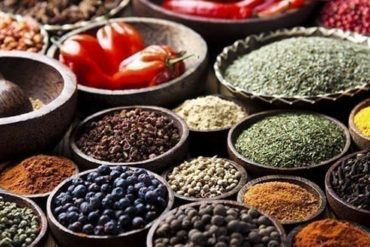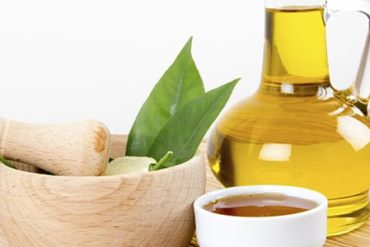Smoke points, cold pressed, unrefined, saturated, unsaturated. These are just some of the confusing terms you will be subjected to while wading through the supermarket aisle looking for a new cooking oil to use. This guide will help you to make the right nutritional choices when cooking with oils.
Smoke points
The smoke point of an oil is one of the most important things to take into consideration when frying foods. An oil’s smoke point is the temperature at which it goes rancid and starts to breakdown.
When food is fried at high temperatures, the oils become oxidised and create harmful free radicals that can cause oxidative stress. This results in cell and tissue damage, by stealing electrons from molecules in the body.
This turns those molecules into free radicals, perpetuating the cycle of damage as well as being linked to neurodegenerative diseases. These free radicals are also carcinogenic, meaning they may increase the likelihood of developing cancer.
That may all sound quite scientific, so in layman’s terms: frying with oils which shouldn’t be fried with can create numerous health issues for you as you age. The best way to stop this from happening is by knowing which foods have a high smoke point, and using those to fry with.
Organic and non-organic
Organic simply refers to a lack of any chemicals, including herbicides, pesticides, fertilisers, genetically modified seeds and growth hormones, used on raw ingredients while they’re being grown. The soil is fertilised naturally using compost or animal manure, as these substances naturally saturate the soil with nutrients.
Non-organic oils refer to oils whose raw products were grown using any of the chemicals or methods listed above. The end product of this practice is oil that contains trace amounts of synthetic chemicals which are created to kill small animals and insects that consume them. In addition to altering the taste and smell of the end product, these chemicals can actually be quite dangerous.
Despite this, they are widely used by farmers as they make produce easier to grow and maintain, consequently being sold to consumers at lower prices. Any fruit or vegetable product that isn’t marketed as organic should be assumed to contain these chemicals.
Extraction
The three main oil extraction methods are expeller, cold pressed and solvent extraction. These simply refer to the way in which oil is removed from the raw product.
Solvent extraction is the most common method used. If it is not stated on the product which method was used, you can generally assume it was this method. It is the cheapest process, leaving the oils bland. These products are thought of as the ‘white sugar’ of oils, as they carry very little in terms of nutrients.
Expeller pressing is a much healthier extraction method, and also doesn’t destroy the flavours of the oils. This chemical process entails squashing the seed/nut and collecting the oil. Because this process can cause high levels of friction, resulting in increased heat, certain more delicate oils may be damaged.
For these specific oils, cold pressing is used. This is essentially the same technique of compressing the seed/nut, but done in a temperature-controlled environment.
Refined vs. unrefined
The smoke points of foods can be affected by how the oils are processed. If an oil is refined it means that a bleaching, high-temperature heating or filtering process has occurred, in order to remove unwanted compounds.
This carries both advantages and disadvantages. On the plus side, the refining process means that the oil has a much longer shelf life and a considerably higher smoke point, making it the better choice for frying. In addition to this, the refining process removes various impurities.
On the other hand, the refining process greatly reduces the amount of nutrients and healthy substances found in the oil. In addition to this, refining greatly reduces the flavour of the oil, leaving you with a bland oil that is void of all nutritious value. For this reason, unrefined oils are better suited to low temperature cooking, for salad dressings and to drizzle over foods.
Unrefined oils are oils that have been extracted through expeller press or cold press techniques. This leaves all the nutrients intact, and gives the oil a strong flavour.
Virgin, extra virgin, regular and light
These terms refer only to olive oil, and are regulated by law. Extra virgin, virgin, regular and light olive oil may all seem interchangeable, but don’t be fooled – they are actually rather different.
Extra virgin olive oil
Extra virgin olive oil is the highest quality olive oil, and should cost the most money out of the bunch. This oil is the result of the simplest extraction process. No chemicals or solvents are used, the oil is simply pressed out of the olives, usually cold pressed to stop the oil from being damaged. Each step is monitored to ensure the oil is of the highest quality. Extra virgin olive oil is simply virgin olive oil that has passed stringent chemical and taste tests and is allowed the title ‘extra virgin’.
Extra virgin olive oil has the most sought after taste and smell, and really is the gold standard of olive oil, containing more nutrients than any other olive oil. As there has been no refining process, this oil’s lower smoke point means it goes rancid at a lower temperature, making it a poor choice for cooking with. This oil truly excels when used for dips, dressing and drizzling over foods.
Virgin olive oil
Second in quality only to the extra virgin variety, this oil is made using the same methods. It is also unrefined and extracted using the cold pressing technique. Virgin olive oil contains lots of nutrients, and keeps its olive oil flavour.
The only difference between the two is that virgin olive has a slightly less intense flavour and aroma, and hasn’t passed the rigorous testing standards allowing it to be named extra virgin. Virgin olive oil also goes rancid at a lower temperature, meaning it is best saved for dips, dressing and drizzling over foods.
Regular olive oil
Olive oil may also be called regular olive oil or pure olive oil, and is usually a mix of virgin and refined olive oil. Regular olive oil is extracted through the use of solvents, and is further refined through heat treatment. This rids the oil of its natural flavour and aroma, making it a bland choice for dips, dressings or drizzling.
This type of oil also has a large quantity of its nutrients destroyed during processing. On the other hand, because refined olive oil is treated heavily, it has a higher smoke point, making it a better option for frying.
Light olive oil
Light olive oil is the most confusing of the bunch, as people often assume that “light” stands for low in fat or calories. Light simply refers to the olive oil’s light flavour, and neutral aroma.
This distinct lack of taste and smell is the result of a heavy refining process. This process strips the oil of its vitamins and phytonutrients, removing the health benefits. Despite this, the smoke point of these olive oil is considerably higher, making it a better option for high-heat frying.



